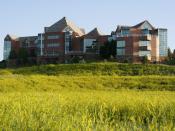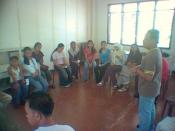INTRODUCTION
It could be said that there are two extremes to the leadership continuum - on one end would be the harsh and brutal aristocrat while on the other end is a caring, considerate and supportive leader. While there are some leaders who can be identified with just one of these, some manage to adapt themselves based on the situation. However, the success or failure of any of these approaches to leadership depends to a large extent on the organization setting being dealt with. Certain leaders in certain settings can make the difference between enormous success and overwhelming failure.
'â¦the leader of armies is the arbiter of the people's fate, the man on whom it depends whether the nation shall be in peace or in perilâ¦'
Sun Tzu, circa 400 BC
The readings deal with one of the most debated topics of organizational life - leadership; a field that has been extensively studied with the hopes of pinning down the characteristics of a successful leader.
Griffin and Moorhead present a compilation of several theories dealing with this topic - some historical views on leadership like the trait and behavioral approaches and a few products of more contemporary research like the Least Preferred Co-worker (LPC) theory, the path goal theory and the Vroom's decision tree approach.
DEFINING LEADERSHIP
"Leadership is the art of getting someone else to do something you want done because he wants to do it."
Dwight D Eisenhower
Leadership can be defined as both a process and a property.
As a process, it would signify the use of non-coercive influence to direct and coordinate a group's activities towards meeting a goal. As a property, it is a set of characteristics attributed to those who are perceived to use such influence successfully.
Thus while leadership could influence the group's...



Opinion
Reference missing, but otherwise a good effort.
0 out of 0 people found this comment useful.